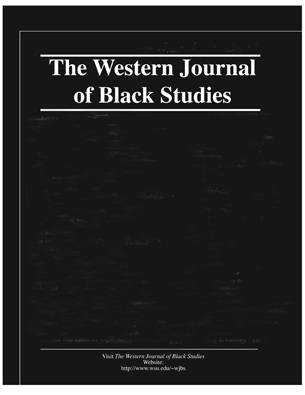Volume 30, Issue 3
Supporting Diversity Works:
African American Male and Female Employment
in Six Florida Cities
James Button—University of Florida
Kelli N. Moore—James Madison University
Barbara A. Rienzo—University of Florida
Studies that address African American labor market trends tend to focus on how blacks fare relative to whites, with little attention given to the job market performance of black women compared to black men. This empirical survey of 167 randomly-selected businesses in six Florida cities explores African American male and female employment and the independent factors that explain these employment levels. Findings indicate that black males are employed at slightly higher levels than black females, suggesting the double-disadvantage of race and sex discrimination confronting black women. Multivariate regression analysis utilizing demographic data and characteristics of the firms reveal that for black men, businesses that favor diversity in the workplace and support affirmative action are likely places of employment. Black women benefit more from national- or regional-based firms that promote a multicultural workforce.
pp. 133-141
Offensive Language Afflicts Black Youth’s Psyche
Joseph Bailey—Retired Orthopedic Surgeon, Carson, Ca
A new way of thinking is required to assess whether offensive language afflicts the psyche (Egyptian for “soul”) of struggling Black American youth. Ordinary evaluations are inadequate because the subject is in chaos; the subject possesses many hidden recesses; and the subject’s components are beyond the scope of the “Objective” Scientific Method. To the end of getting around these problems, and to remove barriers to insights concerning causes and effects, and to design a new paradigm for management, this article focuses on five major points.
First is discussing the Subjective Realm of Ancient African Tradition so as to spotlight standards against which the effects of offensive language can be compared. Second is reviewing how offensive language arose in Africa and then mushroomed when Africans were brought to the Americas as slaves. Third is classifying offensive language and outlining how it is displayed in “The Streets.” Fourth is speculating on how offensive language afflicts Black’s psyche and self-esteem. Fifth is proposing over-simplified methods for reversing presumed psyche afflictions. Despite the inability to ever prove or disprove the propositions contained herein, they still serve as “workable” tools for assessing and managing problems of an offensive language nature
pp. 142-154
Realizing Democratic Values With Race-Sensitive Affirmative Action
Manley Elliott Banks, II—University of Florida
This article examines three studies published in the Western Journal of Blacks Studies’ 2003 Special Issue on Affirmative Action. Lana Guinier contends that affirmative action helps link an university’s admission process to its mission of educating students to be public-minded citizens. A plan that grants university admission to students ranking in the top tier of their high school class is favored. However, percentage plans are found by Bridget Long to be inadequate. Long argues that race-sensitive affirmative action is needed. Gurin and colleagues support this conclusion and soundly explain why the educational process benefits from having a racially and ethnically diverse student population. I contend that race-sensitive affirmative action programs are needed to address the substantial disadvantages stemming from economic inequities between minorities and whites.
pp. 155-159
Ethnic Identity Development of African Americans:
Experiences in Search of A Paradigm
André Branch—San Diego State University
Russell Young—San Diego State University
The dynamic and evolving definitions of race and ethnicity, and the many models of ethnic identity development still leave some African Americans asking what about me? We review the historical development of ethnicity in the African American experience, as well as selected models of racial/ethnic identity development. We also note limitations in these models that leave some present day African Americans looking for a paradigm to explain their experience. In the context of present day understandings and controversies with race and ethnicity, we problematize racial and ethnic identity development and discuss critical components that beg for inclusion in any new model of ethnic identity development for African American people.
pp. 160-170
The Relationship Between Racial Identity Attitudes and Interpersonal Development of African American College Peer Mentors
Sherry K. Watt—University of Iowa
This study explores the relationship between the racial identity attitudes and the interpersonal aspects of psychosocial development of African American peer mentors on a predominantly White campus. The 46 participants were college students between the ages of 18–21. The Black Racial Identity Attitude Scale (RIAS-B; Parham & Helms, 1981) and the Student Development Task and Lifestyle Inventory (SDTLI; Winston, Miller, & Prince, 1987) were used to assess racial and interpersonal aspects of psychosocial development. Immersion/Emersion racial identity attitudes were negatively correlated with Tolerance and positively correlated with Intimacy. Implications for future practice counselors and student affairs professionals are discussed.
pp. 171-180
Book Reviews
White: The Biography of Walter White, Mr. NAACP
Author: Kenneth Robert Janken
Reviewer: Mark Christian, Miami University
pp. 181-182
Through Ebony Eyes: What Teachers Need to Know but Are Afraid to Ask About African American Students
Author: Gail L. Thompson
Reviewer: Michelle Howard-Vital
The University of North Carolina, Chapel Hill
pp. 182-183
Come Hell or High Water: Hurricane Katrina and the Color of Disaster
Author: Michael Eric Dyson
Reviewer: Dr. Sharon E. Moore, University of Louisville
pp. 183-184

| The WJBS site is normally maintained by Tanya Gonzales. Please feel free to e-mail comments, queries, and suggestions. |
Heading using the h3 tag
Lorem ipsum dolor sit amet, consectetur adipisicing elit, sed do eiusmod tempor incididunt ut labore et dolore magna aliqua. Ut enim ad minim veniam, quis nostrud exercitation ullamco laboris nisi ut aliquip ex ea commodo consequat. Duis aute irure dolor in reprehenderit in voluptate velit esse cillum dolore eu fugiat nulla pariatur. Excepteur sint occaecat cupidatat non proident, sunt in culpa qui officia deserunt mollit anim id est laborum.